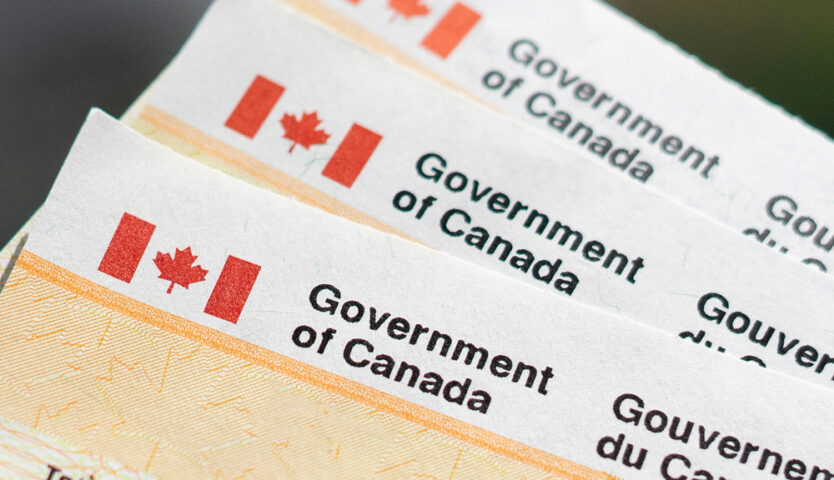
While most people are hoping for brighter prospects in 2021 many Canadians are going to be approaching their taxes with an additional income to consider, which may cause some confusion and financial hardship. The best way to avoid this is to take the time now to consider what implications the CERB will have on your taxes in 2021.
With a little foresight and proactivity, you will be better prepared to tackle your 2021 tax return and pay the owing taxes on your CERB payments. In this article, we’re going to go over what the CERB is, how it’s going to be taxed and how you can plan ahead for CERB-related tax implications:
What is the CERB?
In response to the COVID-19 pandemic that shut down our entire country earlier this year, the government offered assistance through a program called the Canadian Emergency Response Benefit (CERB). This program provided Canadians with up to $8000 worth of relief funds between March 15, 2020, and September 26, 2020, if they were unable to work due to the pandemic.
After that period of time, the CERB was rolled over into the Employment Insurance program. The CRA did not withhold any taxes on CERB payouts so many Canadians are left to wonder exactly how this income is going to affect the taxes they file in 2021.
The answer is pretty straightforward as long as you know how income is taxed.
How Much Can the CRA Tax the CERB?
The tax rate on the CERB payments will depend on your total earnings in 2020. You can estimate your taxes by adding together your employment income (including any self-employed income), income from other sources and your CERB payments.
Basically, the CERB is taxable income but it was not taxed when it was given to you – this is why determining the tax rate is important. For example, if you earned $40,000 (after taxes) through employable income and $8000 in CERB in 2020, your taxable income is $48,000.
That total will determine under which federal and provincial tax brackets you fall into. For example, the federal tax rate on the first $48,535 is 15%. Anything you earn above that amount is taxed in a higher bracket.
You also have to consider provincial tax rates, which differ from province to province. Here are the provincial tax brackets for Alberta:
- $131,220 or less = 10%
- $131,220.01 to $157,464 = 12%
- $157,464.01 to $209,952 = 13%
- $209,952.01 to $314,928 = 14%
- $314,928.01 and up = 15%
To use our example above, you would determine the tax rate based on the total of earned income and CERB, which would be $48,000. This amount would be taxed federally at 15% and provincially (in Alberta) at 10%. The total tax rate works to 25%.
To determine the tax on your CERB, take that marginal tax rate of 25% and apply it to the amount of CERB received. If the full $8000 in CERB was claimed, the taxes would equal $2000. The total taxes owing in this example would be $12,000 but, since the CERB was not taxed, you are guaranteed to owe that $2000.
Keep in mind that this is a simple calculation that does not take into consideration any tax credits or deductions, which would certainly apply to your earned income. That being said, expect to pay the taxes on CERB.
How to Plan Ahead for CERB-Related Tax Implications
At Liu & Associates, we strongly urge you to start planning for the next tax year as soon as possible. Don’t wait until April of 2021 to start getting your financial affairs in order.
First and foremost, you should prepare for owing taxes on the CERB by setting aside whatever money you can. By using the numbers given above (you can check your province’s tax brackets here), you can estimate how much in taxes you could be owing.
For many families, the CERB presented a reduction in monthly income. In these cases, it is best to look at budgeting and debt management to ensure the owing taxes will be available next year.
Our expert accountants at Liu & Associates want to help you keep your finances on track. If you have any questions or concerns regarding your plan to pay the CERB taxes, please don’t hesitate to get in touch!
How to File Your Taxes with CERB Payments
When tax time rolls around, those who claimed the CERB will receive a T4A from the government for 2020 indicating the total amount of funds received.
This amount will be claimed on line 13000 of your income tax return and the new T4 slip will break your employment income into periods that align with CERB payment periods.
The new format will inform the CRA of the CERB amount you received while you were still working.
This T4A must be reported on your income tax return as income and, since no taxes were deducted from the CERB payments, you need to be prepared to pay the taxes on it.
As mentioned above, the amount owed will depend on your 2020 marginal tax rate, which takes into account all other income earned in 2020.
Again, if you are unsure how to proceed with filing your taxes and CERB payments, get in touch with Liu & Associates for more information.
Take Action Now
The more you do now to determine what kind of taxes you will owe on your CERB payments, the less stressful next year’s tax season will be.
Take some time to determine how much, approximately, you will make this year and crunch the numbers to get your tax rate.
Again, if ever you find yourself struggling with this, our team at Liu & Associates is ready to help you sort out your taxes and manage your finances. Get in touch with us today!
